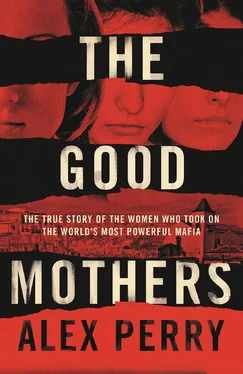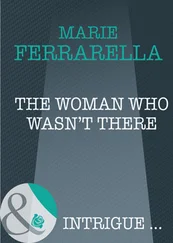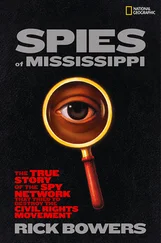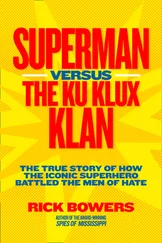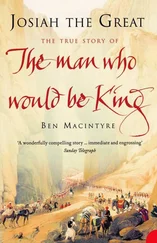It was a good point, thought Alessandra. What mattered with faith was not plausibility but belief. Most of the main religions clung to unlikely myths and holy stories, which they called miracles or acts of God. Few of them were ever hurt by others laughing at them – quite the opposite. More to the point, a lie was just that: a fib, a fiction, a deceit. No one was claiming the ’Ndrangheta’s bosses believed it. After all, they were the ones telling it.
A better question was why the ’Ndrangheta chiefs found such decorous fantasies expedient. The answer was to be found in their spectacular rise. However contrived and derivative the cult of the ’Ndrangheta might appear to academic examination, it had gained the organisation the loyalty and secrecy of its members, the fear and respect of ordinary Calabrians and, as a result, a thick cloak of opacity under which it hid from the world. The ’Ndrangheta’s stories might have appealed to Calabrians because of their own distrust of the state or their sense of theatre, or simply because they were handed down from father to son with the solemn conviction of a sacred truth. The point was they worked. Myth was how the ’Ndrangheta assumed a moral purpose when it was self-evidently immoral, how it coloured itself romantic and divine when it was base and profane and how it convinced others it was their righteous champion even as it robbed and murdered them. Myth was how those inside the organisation were persuaded they were following a higher code and those outside it found themselves stumped by even the simplest questions, such as who was who. It was all an enormous lie. But it was a lie that explained how, almost without anyone noticing, a small group of families from the wild hills of Italy’s south had become the twenty-first century’s most formidable mafia.
Alessandra became fascinated by the intricacies of the deception. The ’Ndrangheta was an extraordinary puzzle, a multi-level mosaic. From transcripts of tapped phone calls and bugged conversations, she discovered ’Ndranghetisti had their own language, baccagghju , a slang based on Grecanico whose meaning was obscure to almost everyone but initiates. Even when they spoke Italian, ’Ndranghetisti used a code of metaphors to disguise their meaning. An ’Ndrangheta family in criminal partnership with another would describe itself as ‘walking with’ that other family. Rather than demand protection money outright, ’Ndranghetisti would request a ‘donation for the cousins’, an allusion to those men in jail whose families needed support. For a boss to describe a man as ‘disturbing’ or ‘troubling’ was for him to pass an oblique but unequivocal death sentence on him. The euphemisms could be highly contorted. Pizzo , the word for an extortion payment, was a term whose origin was the ‘piece’ of ground on which a nineteenth-century prisoner had slept in jail, which were ranked according to their proximity to the boss. Outside jail in the twentieth century, it had come to denote the tribute that a boss expected from real estate inside his territory.
Deciphering the true meaning of ’Ndrangheta speak was a constant struggle. ‘You have to become more perceptive, more capable of decrypting,’ Alessandra would tell her husband over dinner in their apartment. ‘ Mafiosi very rarely make a direct threat. Instead, they send messages with a dual meaning.’ Even the smallest gesture could carry the utmost importance. ‘They can order a murder just by looking at someone from the prisoner cage in court,’ she said.
One of the ’Ndrangheta’s most audacious lies was its relationship with the church. The ’Ndrangheta was plainly an unChristian organisation. But since it came from the most Roman Catholic of lands, it simply insisted the opposite was true. It invoked the saints, especially the Madonna and Saint Michael, the Archangel. It mimicked prayer and church services in its rituals. And it co-opted and bred priests. At mass, some priests in ’Ndrangheta areas would exhort their congregants to resist outsiders. On saints’ days, they directed celebrants to bow to statues of the Madonna before the capo ’s house while at Easter, the honour of bearing statues of Jesus, Saint John and the Virgin was reserved for picciotti . The most stunning example of the ’Ndrangheta subverting Christianity happened on 2 September every year when crowds of thousands gathered at the small town of San Luca in the Aspromonte mountains for the festival of the Madonna di Polsi. Among the pilgrims were hundreds of ’Ndranghetisti, including the heads of all the clans, who since at least 1901 had used the event as a cover for the ’Ndrangheta’s AGM, the gran crimine . In plain sight, the bosses would sit at a table laden with pasta and goat sauce, present their annual accounts – what they had earned, who they had killed – and elect a new capo crimine for the coming year. ‘The church is very responsible in all of this,’ Alessandra would say. ‘It’s guilty of some terrible, terrible, terrible things.’
Though the organisation found Christianity useful, Alessandra concluded that at its core the ’Ndrangheta was more of a blood cult. Blood was the bond between families that was the ’Ndrangheta’s strength. The act of spilling blood was also revered as a source of fearsome power. That had led to some unforgiving ’Ndrangheta feuds. The Duisberg massacre of 2007 – which police identified as an attack on an ’Ndrangheta initiation celebration when a burned picture of Saint Michael was found in the pocket of the dead eighteen-year-old – was the latest atrocity in a quarrel between two clans from San Luca. The feud had begun in 1991 when a group of boys from one family threw rotten eggs at the window of a bar owned by another. Including Duisberg, nine people had since died. Many more had been injured. To avoid being shot, ’Ndranghetisti in San Luca would hide themselves in the boot of a car just to travel 100 yards. Killings were timed for maximum horror. The year before Duisberg, a boss from one clan was paralysed by a bullet that passed through his spine as he stood on a balcony cradling his new-born son. In revenge, a rival boss’s wife was shot dead in her family home on Christmas Day.
Why the ruthlessness? For the ’Ndrangheta, the answer was easy: to instil fear and reap power. For individual ’Ndranghetisti, the question was more vexed. Why be an ’Ndranghetista if your fate was to spend lengthy stretches in prison, inflict unspeakable violence on your neighbours and, in all probability, die young? Alessandra decided it came back to the lie. The ’Ndrangheta had used its fantasies about honour, sacrifice, loyalty and courage to build a prison around its young men, trapping them in a claustrophobic sect based on blood and butchery. Pride in the ’Ndrangheta’s rural heritage even encouraged some ’Ndranghetisti to imbue their violence with a rustic aesthetic. Pigs often featured. A family targeted for intimidation might discover the throats of all its male pigs had been slit. On one occasion, the carabinieri recorded an ’Ndranghetista boasting how he beat another man unconscious, then fed his living body to his own pigs. The bloodthirstiness could also be literal. More than once, men loyal to an assassinated boss were observed to rush to the scene of the killing, dip their handkerchiefs in the departed capo ’s blood and press the dripping cloth to their lips.
Alessandra realised that the ’Ndrangheta’s phoney cult of blood, family and tradition also accounted for its oppression of its women. That misogynist tyranny was real enough. Driving through small town Calabria, Alessandra rarely saw women out of doors and almost never unaccompanied. Nevertheless, it was with a sinking sense of inevitability that she read that the ’Ndrangheta’s conservative values were yet another affectation.
Читать дальше
